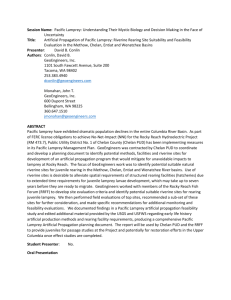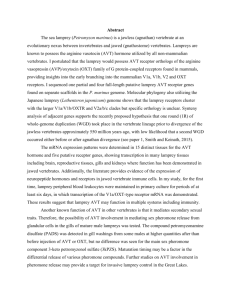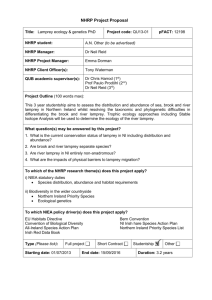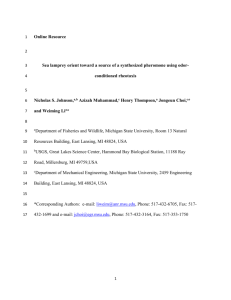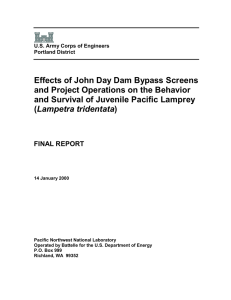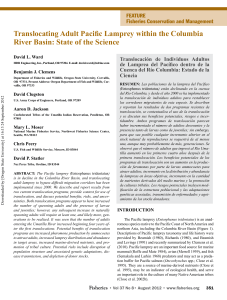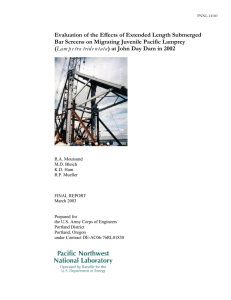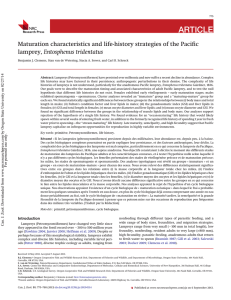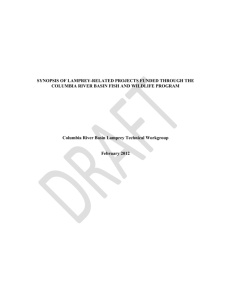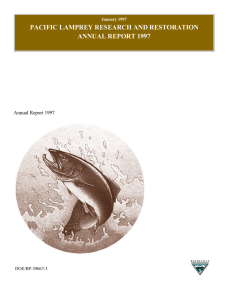rocky reach hydroelectric project
advertisement
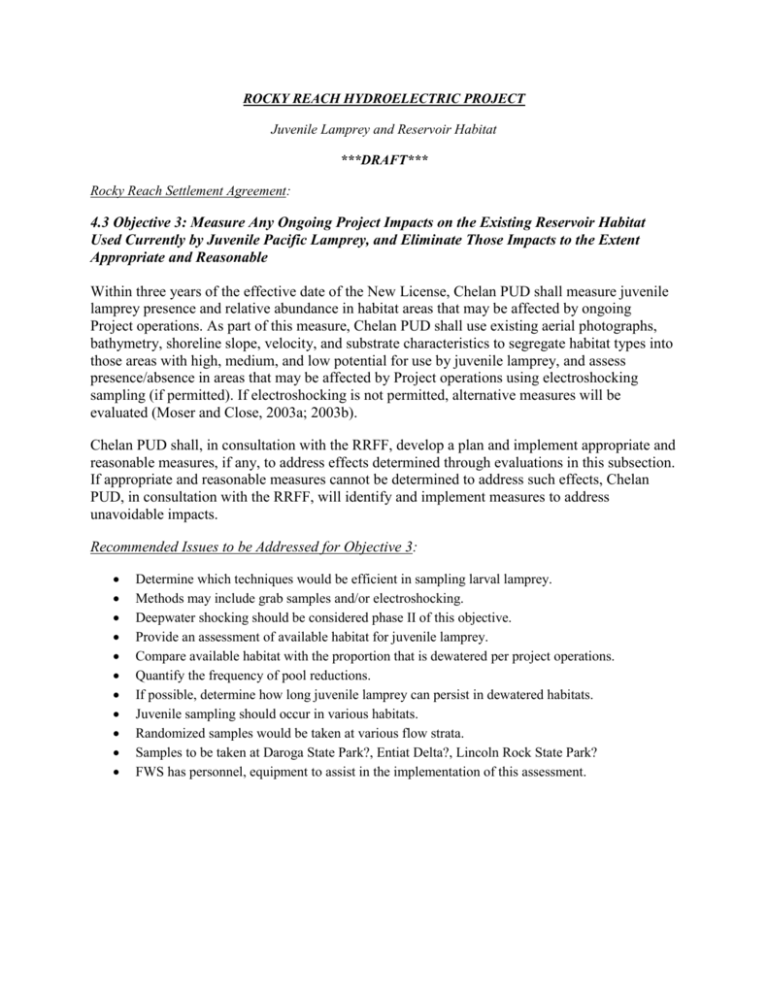
ROCKY REACH HYDROELECTRIC PROJECT Juvenile Lamprey and Reservoir Habitat ***DRAFT*** Rocky Reach Settlement Agreement: 4.3 Objective 3: Measure Any Ongoing Project Impacts on the Existing Reservoir Habitat Used Currently by Juvenile Pacific Lamprey, and Eliminate Those Impacts to the Extent Appropriate and Reasonable Within three years of the effective date of the New License, Chelan PUD shall measure juvenile lamprey presence and relative abundance in habitat areas that may be affected by ongoing Project operations. As part of this measure, Chelan PUD shall use existing aerial photographs, bathymetry, shoreline slope, velocity, and substrate characteristics to segregate habitat types into those areas with high, medium, and low potential for use by juvenile lamprey, and assess presence/absence in areas that may be affected by Project operations using electroshocking sampling (if permitted). If electroshocking is not permitted, alternative measures will be evaluated (Moser and Close, 2003a; 2003b). Chelan PUD shall, in consultation with the RRFF, develop a plan and implement appropriate and reasonable measures, if any, to address effects determined through evaluations in this subsection. If appropriate and reasonable measures cannot be determined to address such effects, Chelan PUD, in consultation with the RRFF, will identify and implement measures to address unavoidable impacts. Recommended Issues to be Addressed for Objective 3: Determine which techniques would be efficient in sampling larval lamprey. Methods may include grab samples and/or electroshocking. Deepwater shocking should be considered phase II of this objective. Provide an assessment of available habitat for juvenile lamprey. Compare available habitat with the proportion that is dewatered per project operations. Quantify the frequency of pool reductions. If possible, determine how long juvenile lamprey can persist in dewatered habitats. Juvenile sampling should occur in various habitats. Randomized samples would be taken at various flow strata. Samples to be taken at Daroga State Park?, Entiat Delta?, Lincoln Rock State Park? FWS has personnel, equipment to assist in the implementation of this assessment. PROPOSED OUTLINE OF JUVENILE LAMPREY STUDY I. Title of Study: Occurrence, Detection, and Habitat Use of Larval Lamprey in Mainstem Shallow Water Environments, Rocky Reach Reservoir II. Objectives: 1. Document presence or absence of juvenile lamprey; 2. Determine the probability of detecting juvenile lamprey; 3. Evaluate juvenile lamprey spatial clustering; and 4. Describe the age distribution of juvenile lamprey III. Project Location: Sample sites would include Daroga State Park, Entiat Delta, and Lincoln Rock State Park, located in the Rocky Reach Reservoir. IV. Project Description: Sampling of juvenile lamprey in deepwater areas is a challenge because of specialized gear requirements as well as presumed patchy distributions. Successful sampling of deepwater areas for juvenile sea lamprey has occurred in tributaries to the Great Lakes using a modified electrofisher with suction (Bergstedt and Genovese 1994). This technique has shown promise in pilot studies in the Lower Willamette River (Windward Environmental 2005). However, one problem encountered when sampling for distribution and abundance of infaunal organisms is associated with the uncertainty in detection probabilities and capture efficiencies. One goal of this study was to develop a statistically robust design to evaluate the distribution (i.e., occupancy) of juvenile lamprey within shallow water areas in the Rocky Reach Reservoir. In part, statistical robustness can be improved by determining detection probability. Knowledge of detection probabilities can inform sample design (e.g., required site visits giving 80% certainty of lamprey absence when not detected) and data analysis for future studies. V. Methodologies: Compare and contrast existing substrate data within the Rocky Reach Reservoir. Sample wadeable areas less than 1 meter deep with the use of AbP-2 backpack electrofisher, grab sampling, and/or shovels. Determine low pool elevation within Rocky Reach Reservoir which would serve to provide ideal conditions for sampling. Assess magnitude and duration of designated low pool elevation. Sampling timeframes would be stratified during the months of March, June, and October and/or late summer/fall depending on the techniques used. VI. Long-Term Monitoring: Determine long-term index site for long-term monitoring of juvenile lamprey.
